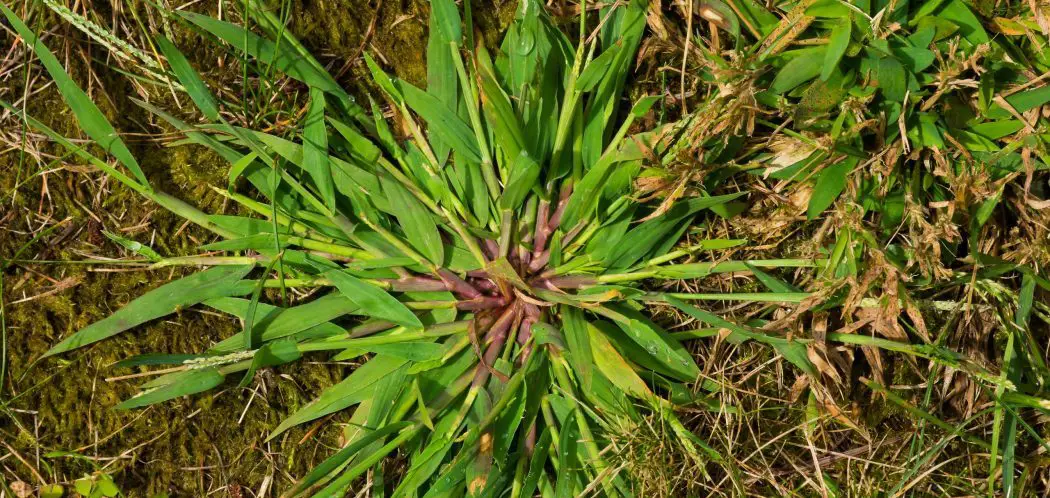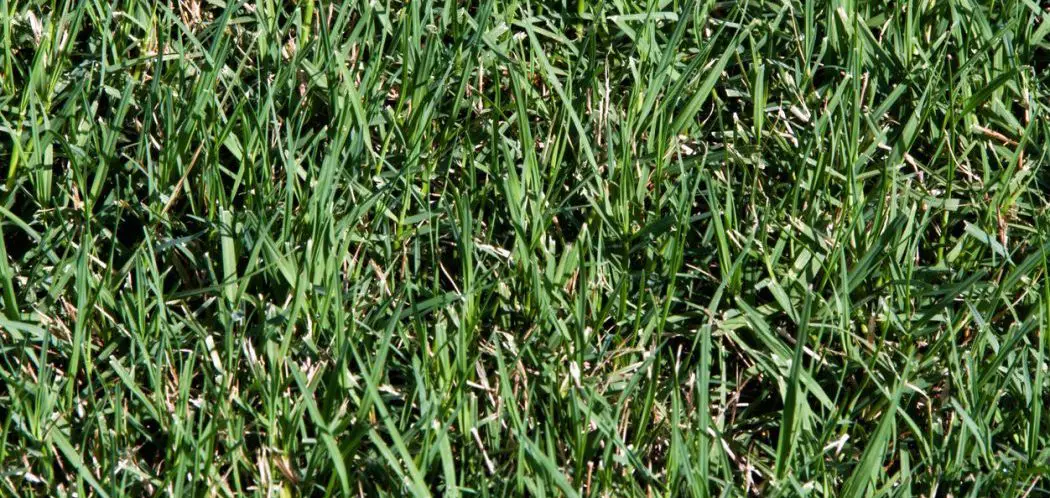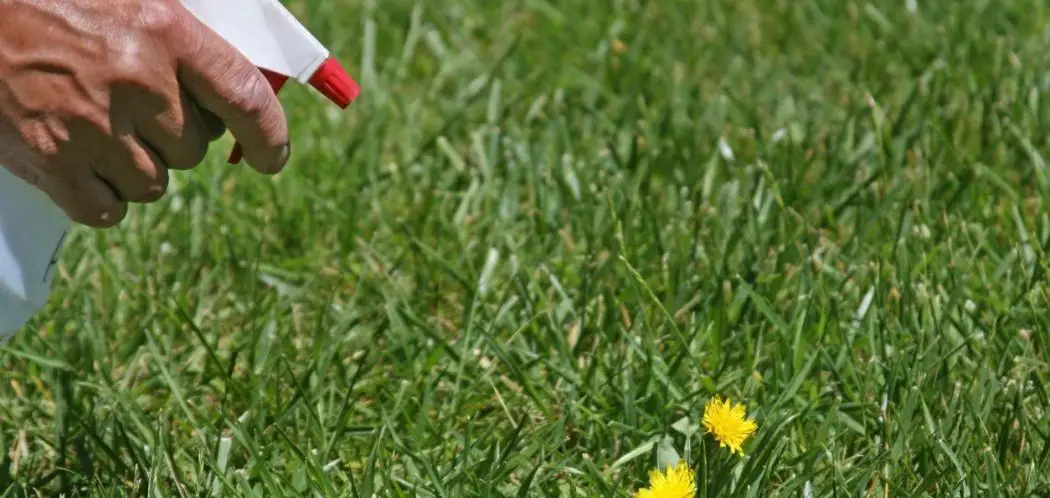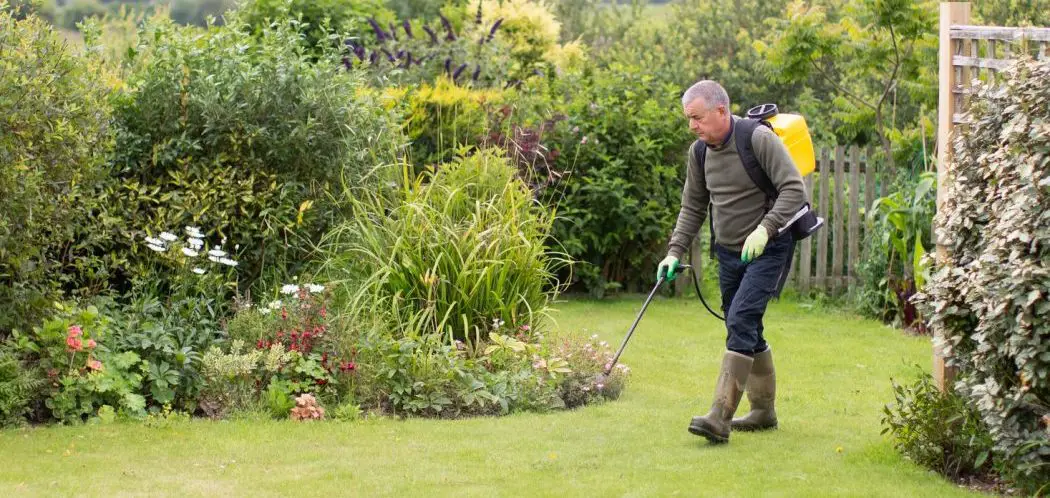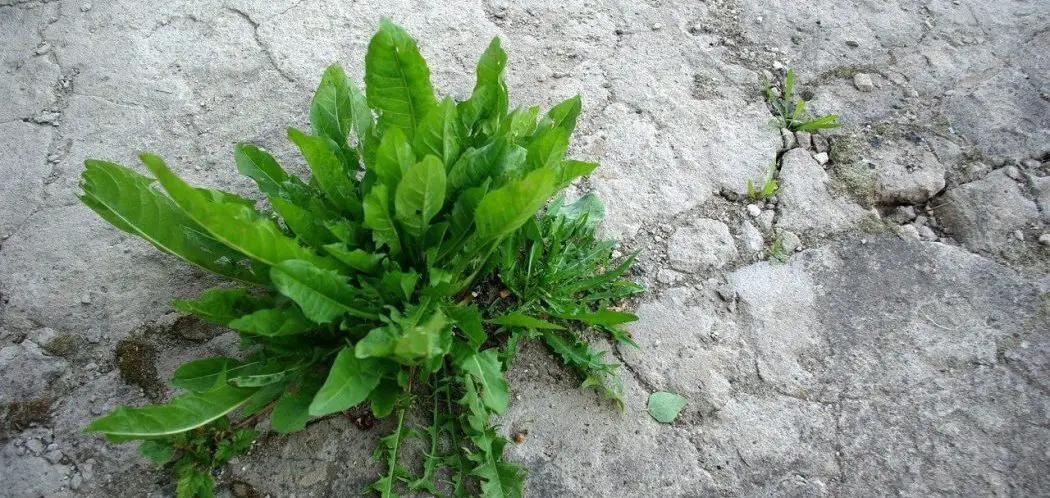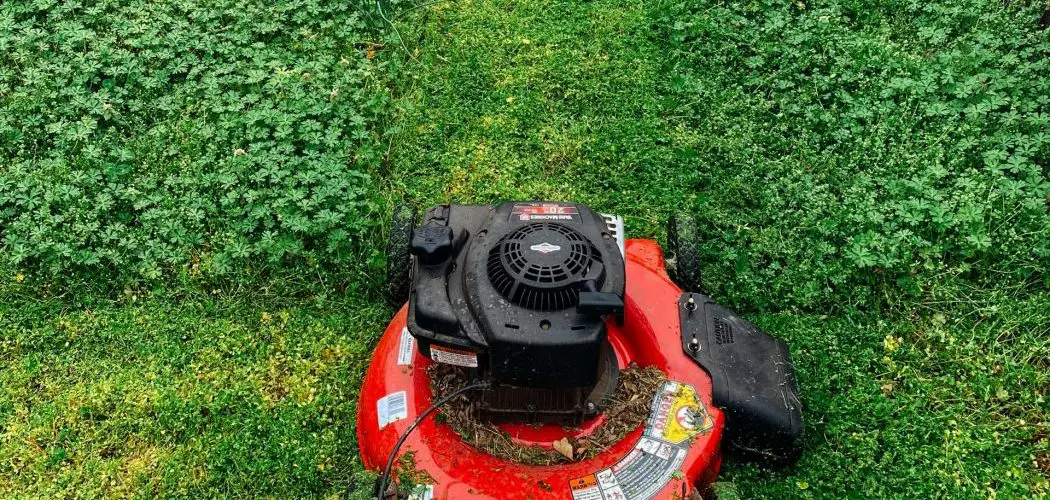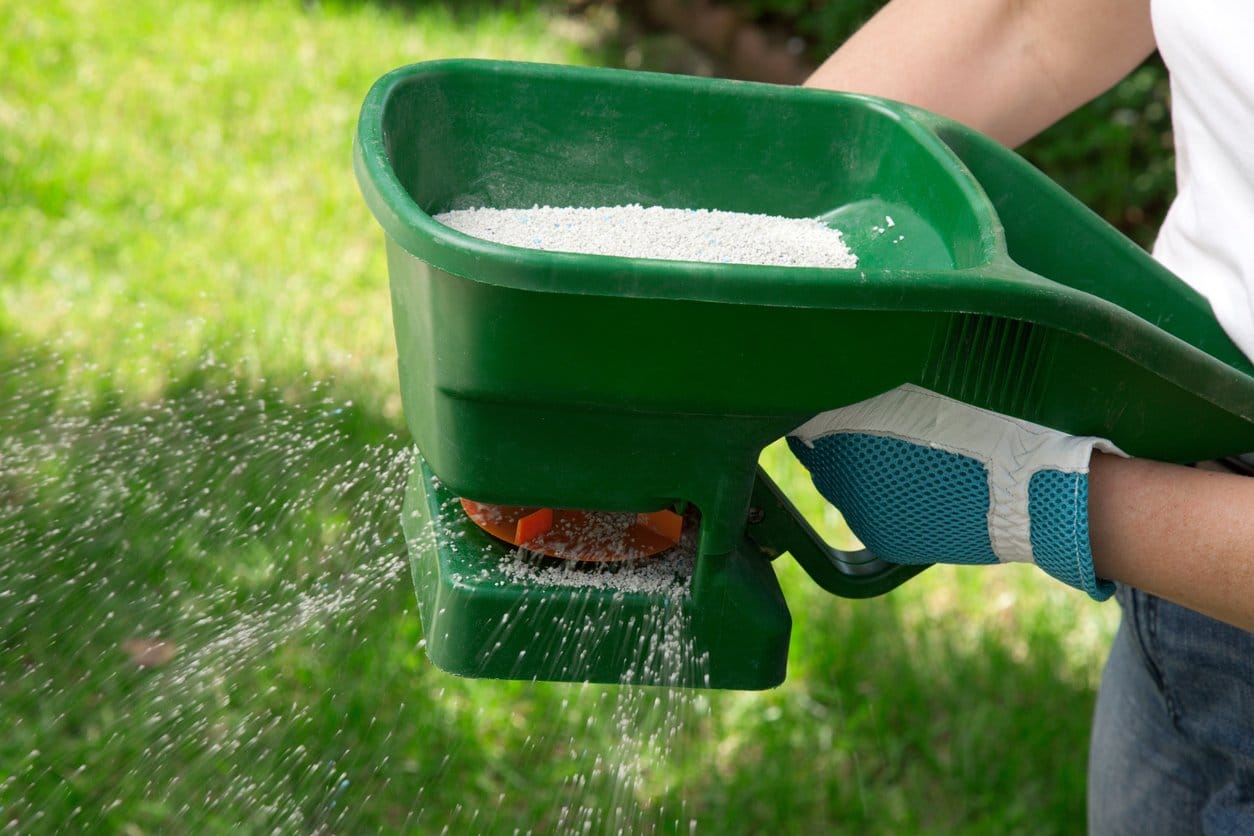Crabgrass is an invasive weed that pretty much everyone has to deal with no matter where they live. It’s an annual weed which means that it grows and dies every year.
It’s very important that you identify crabgrass correctly in your yard since treatments can be different depending on the weed. Even though crabgrass is one of the most famous weeds, it’s often misidentified as Dallisgrass or tall fescue.
When you’re trying to identify crabgrass, you should be looking for:
- Tall seed heads
- Lime green color
- Maturity in mid to late summer
Controlling crabgrass isn’t as difficult as a lot of people may think while it often becomes a problem in lawns during the summer time and when the soil temperature is high enough.
With the right control, you can easily keep it out of your lawn.
If you are going to prevent crabgrass, its good understand how it grows.
Crabgrass Germination
Crabgrass will germinate when the soil temperature is between 55F and 65F, so your best defence against it is to use a pre-emergent product before the soil temperature reaches the lower threshold.
Putting down a pre-emergent anytime your soil temperature is between 50F and 55F will work just fine.
Some people like to use a thermometer to test the soil temperature. This is definitely the most accurate way to determine when you should apply your pre-emergent. You’ll want to take a reading down at about three inches or so. This soil thermometer by Smart Choice (link to Amazon) works great!
You can also get an idea of when to apply pre-emergent by looking at when the flowers, trees and shrubs begin to bloom too. This is most likely to be around March/April time, but of course it’s going to depend on your location. Also, some years it warms up earlier and in others it warms up a little later.
How Do Pre-Emergent Products Work?
By far, the best way to get rid of crabgrass is to use a pre-emergent product before the seeds germinate and so a good pre-emergent product is one of the most important things in any successful lawn care programme. The idea is that you apply the product before the crabgrass starts to germinate to prevent it from being able to grow.
A pre-emergent acts as a barrier to prevent the crabgrass seeds from sprouting in your lawn.
As soon as the seed cracks and tries to root down into the soil, it’s going to come into contact with the chemical which will interfere with cell division. This ultimately prevents the seed from germinating.
With a lot of the pre-emergent products available, you can’t overseed for a few months after you’ve applied it because it will also interfere with the seed growth.
If you do need to seed your lawn, you should wait for about five weeks after germination before applying pre-emergent.
Pre-emergent does not necessarily kill off any of your established grass, and it won’t harm most other shrubs, trees or flowers either.
Depending on the product, it can also work great for other types of weeds in your yard, not just crabgrass.
Chemicals in a Pre-Emergent
When you go to the store, it’s difficult to know what product to buy. There’s certainly a lot of choice but the good news is that all of the active ingredients for pre-emergent herbicide products are pretty comparable.
Most of the pre-emergent products available will be combined with a fertilizer which I’d try to stay away from if possible.
During the early spring time, the grass is already growing quickly anyway so there’s no need to add more nitrogen. It’s going to be a lot harder to keep up with the mowing so I’d rather find a bag without any fertilizer.
In a good pre-emergent product for crabgrass, you’ll often find the chemical prodiamine which works best for early prevention.
I like to use the Quali-Pro Prodiamine pre-emergent Herbicide (link to Amazon).
Here are some of the pros and cons of Prodiamine (often referred to as barricade)
Pros
- Last for a long time
- Inexpensive
- Creates a vapor barrier to prevent crabgrass roots from being established
- Best pre-emergent for crabgrass control
Cons
- Root pruner
- Needs to be watered in quickly
Granular vs Liquid Fertilizer
Some people like to go with a granular product which is fine if you want to apply it to all of the areas in your yard. Personally, I prefer to use a liquid pre-emergent because it’s much easier to apply to specific spots.
What Should You Do if the Soil Temperature Is Already Over 55F?
If you have missed the window in applying a pre-emergent and the soil temperature is now over 55F, I would still recommend putting it down anyway. Some control is better than nothing, even if it’s a little late because not all of the crabgrass seeds will germinate right at 55F. It’s likely some seeds will germinate a little later, so it’s definitely better to put the product down late than not at all.
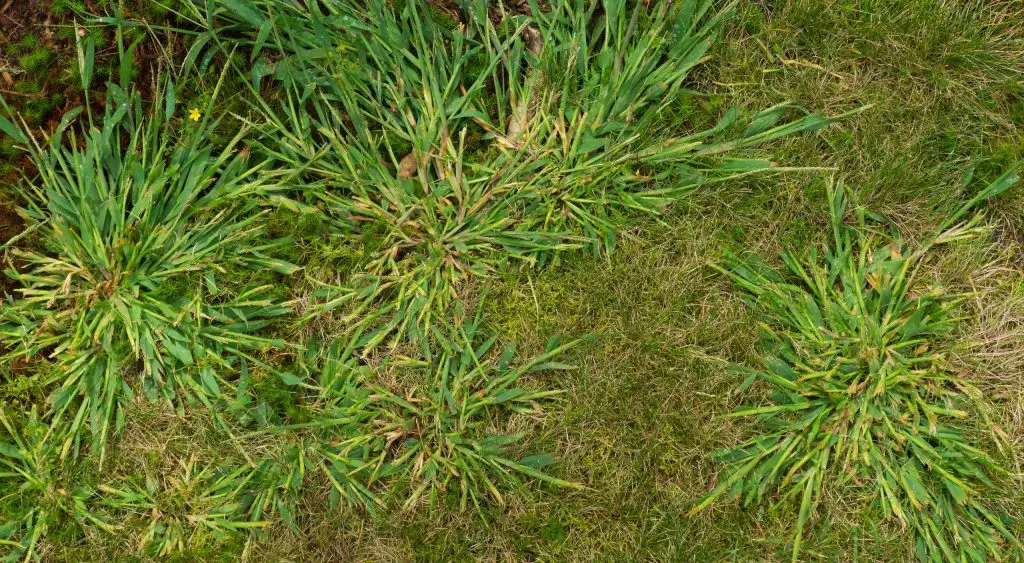
How Do Post Emergent Products Work?
If you’ve missed the boat in applying your pre-emergent and crabgrass is already established, you’ll need to switch over to a post emergent herbicide.
In this case, you’ll be using a selective herbicide. This is a herbicide designed to kill specific weeds. While selective herbicides may kill other types of weeds too, they should not harm your turfgrass if you apply the product in accordance with the instructions on the bottle.
Chemicals in a Post Emergent Herbicide
Quinclorac
Quinclorac is the active ingredient in most products you’ll see over the counter that are meant for treating established crabgrass.
It tends to work really well on crabgrass in all turf types, especially when the crabgrass is in the earlier stages of growth.
I’d recommend the BASF Drive XLR8 Crabgrass Herbicide shown below.
Here are a few things to consider when using Quinclorac…
- Adequate soil moisture is required
- Crabgrass needs to be actively growing
- It’s much less effective in the middle growth stage of crabgrass
- You need to use quinclorac on crabgrass in the early stages. The concentration of quinclorac in over the counter products is not going to be strong enough to get good results on crabgrass that is passed the second tiller stage.
Tenacity
Tenacity is a herbicide that works great on crabgrass if you have cool season turf.
It works great on the following species:
- Buffalograss
- Fescues
- Kentucky Bluegrass
- Perennial Ryegrass
Pay Attention to the Label on Any Product You Use
Follow the label on your product. It’s important to pay attention to the application rate and the schedule for any pre or post emergent you choose to put down.
After Applying a Post Emergent
After you apply a herbicide product, the crabgrass will often turn several different colors before dying off. You might see the stems begin to curl before a gradual reddening after applying a product with quinclorac in it.
It’s good to understand that there are different varieties of crabgrass and it goes through different stages in its life. Depending on the variety of crabgrass you have, or the stage of life it’s in, you might have varying success with different products.
Other Crabgrass Preventers
Weather
Since crabgrass is an annual, it’s going to die out in winter time so if you already have a lot in your yard, it may be better to just let it die out naturally. Then once the spring rolls around the following year, you can put down your pre-emergent product to prevent it from coming up again.
Healthy Grass
I know it’s not what you want to hear, but making sure you have a healthy lawn is one of the best weed preventers in general.
You’ll often see crabgrass start to grow along curbs or on edges where there’s not a complete area of your turfgrass surrounding it. You won’t see it growing in the middle of your lawn either, and this is no coincidence. Having a thick and healthy lawn means that your turfgrass can easily overcrowd the crabgrass. It provides too much competition for the crabgrass seeds so that the plant cannot grow.
Even if you’re using a pre-emergent, you may still get problems with crabgrass if your turf is thin because the pre-emergent can be degraded by sunlight or foot traffic.

